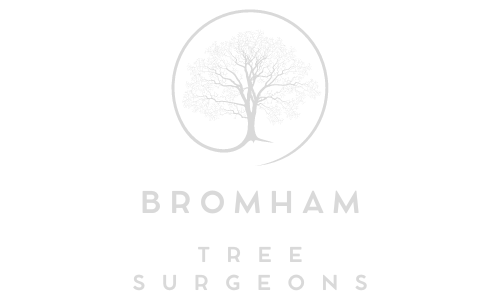Can You Save a Tree That’s Leaning Too Far?
Trees are an essential part of the landscape, contributing to the beauty, ecology, and even the climate of an area. However, trees that lean too far can cause concerns for homeowners and property owners alike. A leaning tree may look like a potential risk, and it’s only natural to wonder whether it’s possible to save it or whether it’s time to remove it.
In this article, we’ll explore the causes of tree leaning, the risks associated with it, and whether there are any measures you can take to save a leaning tree. We’ll also discuss when it might be necessary to consider tree removal and why professional tree surgery is essential in these situations.
Why Do Trees Lean?
Trees naturally grow towards sunlight in a process called phototropism. However, while some leaning is normal, significant leaning can be caused by a variety of factors. Some of the most common reasons a tree might lean include:
1. Wind Damage
Strong winds can cause a tree to lean, especially if the tree is not adequately rooted. If a tree’s roots are shallow or weak, it may not be able to hold the tree upright during high winds, causing it to lean.
2. Uneven Soil Conditions
If a tree is planted on sloped or uneven ground, gravity may cause it to lean toward the lower side. The soil’s consistency can also play a role; for example, loose or sandy soil may not provide the stability a tree needs to stay upright.
3. Root Rot or Damage
A tree with compromised roots, such as those suffering from root rot or mechanical damage, may lean as a result of its inability to anchor itself securely in the ground.
4. Structural Weakness
Trees may lean due to their own structural weaknesses. For example, a tree with an unbalanced canopy or uneven weight distribution may grow at an angle as it seeks stability.
5. Improper Planting
Sometimes, trees are planted improperly—either too deep, too close to buildings, or in unsuitable soil. Over time, this can cause a tree to lean as it struggles to maintain proper growth.
Is It Possible to Save a Leaning Tree?
In many cases, it is possible to save a leaning tree, but it depends on the degree of the lean, the tree’s overall health, and the underlying cause. Here’s what you need to consider:
1. Assessing the Tree’s Health
Before determining whether a leaning tree can be saved, it’s essential to assess the overall health of the tree. If the tree is healthy, with a strong trunk, root system, and canopy, there’s a higher chance of successful intervention. However, if the tree shows signs of disease or rot, such as discolouration, fungus growth, or hollowed-out areas, it may be best to consider removal.
2. The Angle of Lean
If the tree has a slight lean (up to about 15-20 degrees), there may still be hope for saving it. If the tree has a more severe lean—especially if the angle exceeds 30 degrees—the risks of instability increase, and the tree may be a hazard. A tree leaning dangerously near structures or paths should be inspected by a professional.
3. Tree Support and Straightening
In some cases, a leaning tree can be straightened with the right technique. Professionals can use staking systems to help support the tree and encourage it to grow upright. However, this should only be done with healthy trees and when the underlying cause of the lean is addressed (such as soil erosion or weak roots).
4. Root and Soil Treatment
If the leaning is caused by weak or damaged roots, the root system may need to be treated or reinforced. For instance, adding soil around the base to stabilise the tree can help. A professional tree surgeon may also suggest root management techniques to help strengthen the tree’s hold in the ground.
5. Pruning to Balance Weight
Sometimes, the tree’s canopy may be unevenly weighted, contributing to the lean. Professional pruning can balance the canopy and reduce the strain on the tree, encouraging it to grow upright.
When to Consider Tree Removal
While it’s possible to save many leaning trees, there are times when removal is the safest option. Here are some instances where removal may be necessary:
- Severe Lean or Instability: If the tree has a severe lean and is at risk of falling, removal is necessary to prevent damage to property or injury to people.
- Root Damage or Disease: If the tree has significant root damage or signs of disease such as rot or fungal growth, the tree may be weakened beyond saving, making it dangerous to retain.
- Close Proximity to Structures: If the tree is leaning toward buildings, power lines, or pathways, it may pose a serious hazard. Even if it appears to be healthy, a leaning tree in this position should be evaluated by a professional.
Conclusion: Professional Assessment is Key
If you have a leaning tree in your garden or commercial property, it’s important to have it assessed by a professional tree surgeon. While some leaning trees can be saved with the right interventions, others may need to be removed for safety reasons.
At Bromham Tree Surgeons, we offer expert tree surgery services that can help assess the health of your tree and determine whether it’s possible to save a leaning tree or if removal is necessary. Our team is fully equipped to handle all tree care needs, from supporting and straightening leaning trees to performing safe and efficient tree removal when required.
Contact us today to schedule a tree assessment and ensure the safety and longevity of your trees!
Call us on: 01234 860 699
Click here to find out more about Bromham Tree Surgeons
Click here to complete our contact form and see how we can help with your tree care needs.

